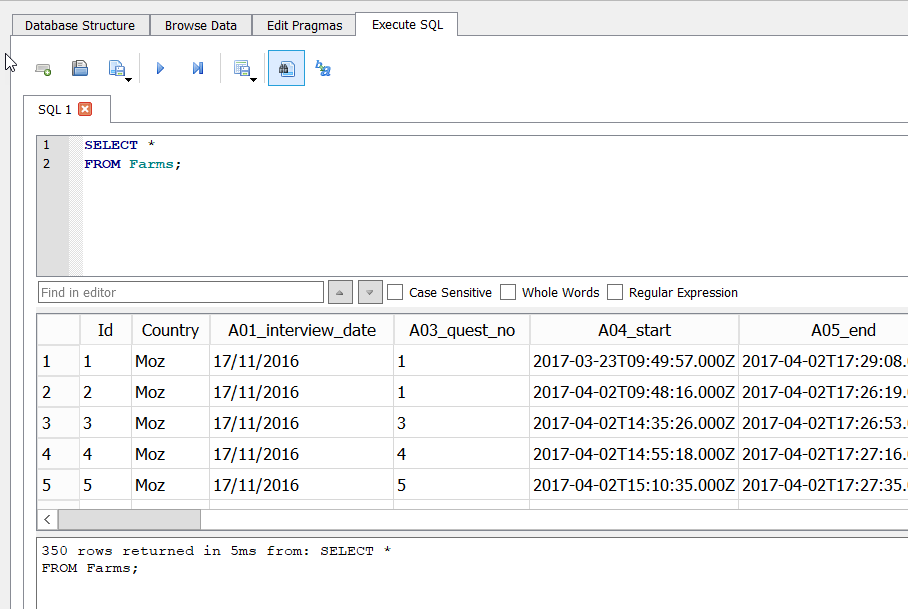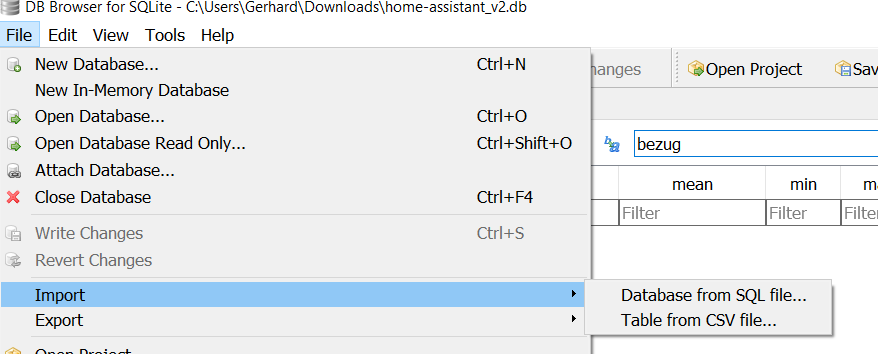

- #Db browser for sqlite import csv portable#
- #Db browser for sqlite import csv android#
- #Db browser for sqlite import csv software#
Execute SQL statements to query your data to find information such as: Record counts: SELECT COUNT(*) FROM my_table Filtered records: SELECT * FROM my_table WHERE status = ‘excellent’ Distinct values: SELECT DISTINCT(updated_by) FROM my_table .I typically create tables for the parent element, as well as any child elements. Unzip the export and import your relevant CSV files as new tables in the database.

#Db browser for sqlite import csv android#
The Fulcrum mobile apps utilize SQLite to manage data on both Android and iOS devices.
#Db browser for sqlite import csv software#
Because of this simplicity, SQLite databases can easily be embedded in software applications, such as web browsers, and mobile apps, making it arguably the most deployed database in the world.
#Db browser for sqlite import csv portable#
SQLite databases are actually simple, standalone files, which are ultra portable and work across platforms. SQLite is an open source, cross-platform “software library that implements a self-contained, serverless, zero-configuration, transactional SQL database engine”. One of the best ways to ease yourself into using SQL, is to become familiar with SQLite. If you find yourself struggling with spreadsheets, do yourself a favor and take some time to learn the fundamentals of SQL. Writing complex Excel macros, with logic hardcoded to specific fields can be extremely nerve wracking once your data structure changes. If you are working with tens of thousands of records with several related tables, you’ll want to resist the urge to use Excel to manage this data. My first recommendation is to use the proper tool for the job. While there is no silver bullet or standard solution, I’ve outlined a process below that I personally use to manage Fulcrum data for ongoing projects where I have to routinely fetch the latest data and present it in a standard way. We often receive support inquiries regarding best practices for managing exported field data. However, if you’ve got a complex form, with related tables (repeatables) and ongoing fieldwork, managing your data can become a daunting challenge. If you are working with a simple form and collecting the data all at once, the process is fairly straightforward.

The Fulcrum Export Wizard allows you to export your data in a variety of standard, GIS-friendly formats. If you need real-time analysis, we suggest integrating with a service such as CARTO, via data shares or Fulcrum webhooks. The standard workflow is to collect your data in the field with Fulcrum, then export it out for analysis in your favorite database, spreadsheet, or GIS application. Once collected, the data must be processed or analyzed, so that it can be turned into actionable information. While we tend to focus primarily on the data collection challenges, we must not forget about the rest of the data cycle. Our goal is to remove the technical hurdles typically associated with developing a robust mobile data collection solution, so that anyone can collect accurate, timely data, which ultimately provides the foundation for sound decision making. The Fulcrum platform has grown tremendously over the past few years, and while we continue to add new features and integrations, the primary task of Fulcrum remains- to enable users to quickly and easily build structured data collection solutions.


 0 kommentar(er)
0 kommentar(er)
